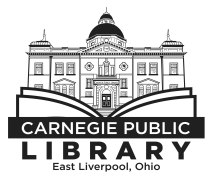East Liverpool, Ohio, is rich in history and today, in the 21st century, you can still see homes and scenes from the 19th century. Many scenes have changed or disappeared with the times. Here is a link to just a few of those pictures that will stir the memory and bring back recollections of a bygone era.
East Liverpool in its earlier times was known by the native inhabitants of the area, the Onandagas, Oneidas, Mohawks, Cayugas, Senecas and Tuscaroras as a prime hunting ground along the Ohio River valley. Later they were succeeded by the Delawares, Miamis and Shawnees.
A great treaty was made between the five nations on one side and the eastern and western tribes on the other. This meeting took place at a flat rocked area, on the beach of the Ohio River a short distance from the mouth of the Little Beaver Creek. At this great council it was agreed that war would cease and that peace would extend from the Alleghenys to the Mississippi. To confirm the treaty each chief drew a symbol in the rock. The Onandagas drew a spider, the Cayugas an eagle, the Oneidas a forked stick, the Mohawks a bear, the Shawnees a turtle and the Senecas a wild goose.
From the time of the treat until 1775 this area was held by the Mingoes and the Cayugas.
In May of 1758 Col. George Washington captured Fort Duquesne, renamed it Fort Pitt and later that year (June or July) made a short voyage down the Ohio camping on what is now known as Babbs Island. Stories say that encumbered with too many provisions he buried a barrel of crackers there to keep them from falling into the hands of the Indians.
On October 17, 1770 George Washington again returned to the area, this time camping on the upper east side. (It is believed this location was close to the Museum of Ceramics).
East Liverpool sits on what is now the State Lines of Ohio, Pennsylvania and West Virginia. This are was in 1787 "The Point of Beginning" for one of the new nations most major undertakings- the survey of the territory west of Pennsylvania and north of the Ohio River. This survey known as the NorthWest Ordinance was to have a major impact on the States now known as Ohio, Indiana, Illinois, Michigan and Wisconsin. The main idea behind the survey was to bring government to the frontier country.
The first settlement in Columbiana County was made in 1792 by John Quinn, a hunter and trapper who built a cabin in the area now known as Calcutta. The first settlement made in Liverpool Township was in 1795.
In 1798 Thomas Fawcett purchased 1,100 acres of land along the Ohio River, paying $3,651. He believed that the area was a choice location and would attract settlers because of the abundance of natural resources. He also laid out plans for St. Clair, named after Governor St. Clair, which would become the foundation of the city we know today. The residents renamed it Fawcettstown which it remained until 1816 when it was changed to Liverpool. The town was eventually renamed East Liverpool when it was incorporated on January 4, 1834 to prevent confusion with another Ohio City called Liverpool.
